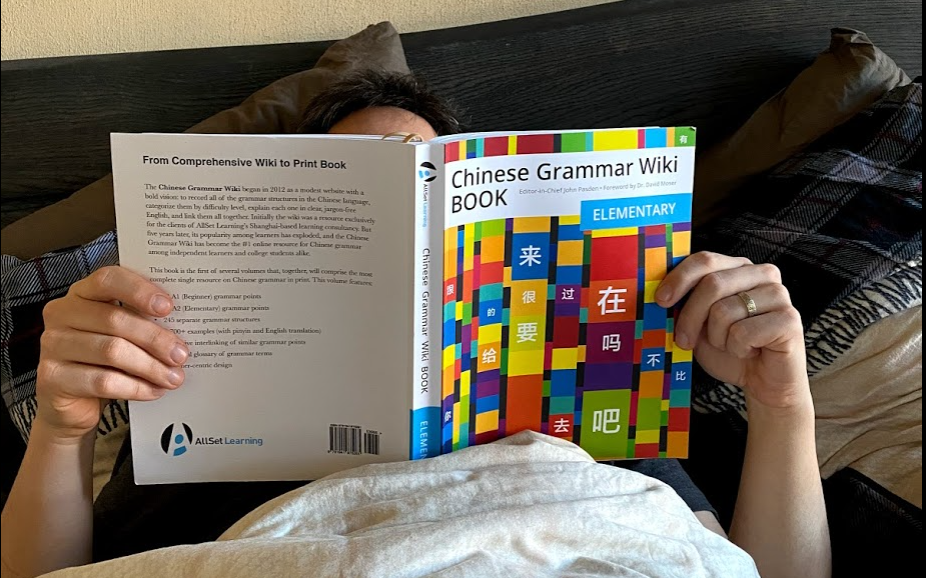I sometimes get asked how me and my husband learn Chinese and I thought to start this website so that I can just link them to this post 🙂 I must say right away that I am not a linguist or a sinologist, I just love languages and the mindset of being a polyglot. I mastered Italian, Slovenian, Korean and Spanish all by myself, without attending any language courses, and also read a couple of books on this topic – “Fluent Forever” (Gabriel Wyner) and “How to Speak Any Language Fluently” (Alex Rawlings). I must say right away that I started reading these books after I had figured out everything myself, since most of the tips can be found online, but I sometimes wish that I started with reading the books first, since they do a pretty good job of neatly organizing everything in one place.
But back to Mandarin Chinese. With this language, I had two main challenges to overcome – first of all, Mandarin itself is super hard – it is a tonal language notorious for the difficulty of memorizing thousands of Chinese characters. In the past I chose Korean instead of Chinese and Japanese precisely because I didn’t want to learn characters. The second challenge – we began to study together with my husband, who has never learned languages by himself, even though he knows quite a few. He can speak Slovenian, Serbo-Croatian, German and English, and thanks to frequent trips to Russia, his Russian is not bad for someone who’s never studied it. He turned 40 this year, so it was important for me to keep his interest and not to overload him, but at the same time progress quickly.
As with other languages, I decided to focus all my efforts on speaking rather than reading and writing, because our main goal is to communicate with our business partners in China. With this in mind, we decided to study only using the pinyin transliteration system and not characters, because it is more important for us to learn to speak than to write and read. For example, Chinese characters are written as 汉字, but pinyin is written as hànzì. If we were to learn all these characters, we would have to spend hundreds of hours that we do not have. Moreover, when we work with textbooks, we ignore words from the school vocabulary, such as “semester, grades, test, homework” and concentrate on those words that will really be useful to us in the future – “payment, deposit, minimum order, quality control” etc.
It all sounds logical, right? But the most difficult thing was to start and understand what works for us and what doesn’t. I bought an annual subscription to chinesepod.com (they sometimes have 50% discount on different holidays). Chinesepod is a site with Mandarin podcasts, they are also available for free, for example in Apple Podcasts, but I like to study more on the site because it has all the transcripts and additional examples. There are tons and tons of podcasts and I know that I could learn more on this site, but together it is not as convenient as the main course, so we turn to it from time to time, but we do not use it every day.
One of the most important things in learning any language is Spaced Repetition Software and I don’t understand why it still isn’t widely recognized. It seems like only true language lovers and geeks use SRS, while it should be a basis for language learning for everyone, be it at schools or universities. Just 10-15 minutes a day with SRS create a huge gap between someone who studies using SRS and someone who studies the “traditional” way.
My SRS of choice is Memrise, it helped me immensely in learning Korean 3 years ago. We started Chinese 1 course on Memrise a year ago, in November 2018 and were progressing quite well, but 2019 turned out to be a very stressful year with a lot of business trips, so we studied on and off and not very seriously. We had a pause of several months until about the end of June, where I began to get back on my feet after a total burnout. We even managed to practice Memrise on our October trip to Japan-Korea and China, but paused in December for a Euro tour with one of our artists. When I say “practice Memrise” it usually means about 10 minutes a day. The darker the square, the longer I spent at Memrise that day. Right I have streak of 321 days since I started studying on the very first day after returning from America.

Memrise is a gamified SRS, so you usually have to choose or type a correct answer. There are short videos, sounds, and the ability to create your own courses. It works great for learning words that don’t seem to mean anything at first glance, since Memrise will drill you with that word until you memorize it and start getting it right. For some reason, the Spanish Memrise did not go so well for me, maybe because many words are so similar to English and Italian.
I’ve tried Anki a few times, but I guess I’m too used to Memrise and I just couldn’t make it work for me. For me, Memrise is much more convenient, user-friendly, cooler, and it has a game element – you can even compete with each other, and there is always excitement – how many points will I get, will I reach my daily goal or not?
Memrise is based in England and they are not as heavily promoted as the Americans Duolingo or the German Babble, I’ve tried learning with Duolingo and I can say for sure that Memrise is what works for me, my husband and my friends. I was very lucky to get to the Polyglot conference in Ljubljana in 2018, where I was presented with a Memrise T-shirt, which I cherish greatly)))
The second sponsor of the Polyglot Conference was italki. A while ago I already registered on it, as I read somewhere that it is good for language practice and language exchange, but I thought it was a free language exchange, like Hello Talk, so when I saw that all partners in Korean language charged money – I decided that it was not for me. And at that time it was ok – I was able to learn Korean myself, and I even found language exchange partners among Korean students who came to Ljubljana to study. But around December 2019, I felt frustrated that we were moving too slowly, that Memrise and Chinesepod weren’t enough to progress faster. And then I come across this video in my FB feed:
This video really inspired me, especially the phrase “we are in the golden age of polyglots, where we no longer depend on schools, courses, teachers.” On January 1 of this year, I woke up with a clear decision to try italki. What do normal people do on January 1st? They relax, watch social networks, sleep, tidy up … And being a crazy couple as we are, we spent the morning of January 1st choosing our future Chinese teacher. There are hundreds of them in italki, everyone has different prices, methods, time zones, there is also division into “professional teacher” (a teacher by profession and teaching experience) and “community tutor” (someone who wants to help people practice the language and make a little money on the side). Prices range from 7 to 30 euros per hour. We found a girl who we liked in the video and who had a lot of positive feedback and booked our first lesson for 2 January.
We were both very nervous at first, but everything went great, Candice was very nice and we made a lot of progress in our first trial lesson. It made me realize how convenient italki actually is – you don’t need to go anywhere, park, adjust to the school schedule, you don’t need to pay for the whole course right away, you can book one lesson at a time that suits you. Complete freedom! For a few months, I really got into italki, constantly looking for new teachers and booking them. I think in just a month I tried 6 – 4 different tutors in Chinese and 2 in Korean (just because I haven’t spoken to anyone in Korean for a while and I wanted to practice it). This coincided with italki announcing a language challenge in February. Of course, I didn’t win, but in February we clocked in 23 hours (the challenge was for 20) and they sent me a T-shirt)) In February we studied for 5 hours a week, juggling 4 teachers – one for grammar, who strictly followed her textbook, the second was for vocab, who taught us words and phrases for work that we sent her – “what is your minimum order? when will my sample be ready? ” and two girls just for speaking practice, where they were typing and sending us all the new words that were coming up in our conversations. After each session I saved new words into our personalized Memrise course and practiced them.
For listening practice, I found many free Chinesepod dialogs in one place and downloaded them. When I was learning Korean, I listened to the dialogues from koreanclass101 on endless repeat, and it helped me a lot to advance in my understanding of Korean by ear, as well as vocabulary and grammatical constructions (since each dialogue included one grammar construction). I listened to them in headphones in the evening before going to bed, while travelling on the plane, in the car… But I have not yet figured out how to listen to them together during lockdown, when we are at home all the time. It just feels a bit silly to sit at the table or lie on the couch and listen to dialogues. I haven’t come up with a solution yet.
I apologize for so many words, I just wanted to explain everything in as much detail as possible. As a result, here’s a summary of how we study:
- A lot of Memrise (both official courses and our own personalized ones) without Chinese characters. Last year we used Memrise for 10-15 minutes a day, but recently I increased the time to 30-40 minutes a day and I see a huge difference. The most difficult thing was to convince Primoz that it was necessary, he resisted at first, but gave in after seeing how efficient it was
- Italki for an hour 2-3 times a week with teachers who we like and whose style of communication and teaching suits us. The emphasis is on live communication and the vocabulary that we need when working with our business partners (Recently I reduced italki to 1 hour a week to give us time to recharge and study with Yoyochinese)
- Chinesepod when time allow, I feel that it became much more interesting once we got to the intermediate level and currently I really like using it
- Short Youtube videos on different grammar topics, for example “the difference between youdiar and yidiar”, “the difference between kan, jian and kanjian”
- Chinese Grammar Wiki book – we just read it from time to time, the thing with grammar books is that it’s nice to have all the grammar of the same level in one place. I read and re-read it, focusing on the grammar that I forget easily. If the construction is not easy to remember, then I save the example in Memrise and try to memorize it this way
- Chinese dramas. I never liked Korean dramas, so I didn’t expect to fall in love with Chinese dramas, but we are shredding through them! We started with “Ode to Joy”, then moved to “Nothing but Thirty” and are currently on “Twenty not Confused”. They are so interesting and we learn so much from them, we practically stopped watching anything else 🙂
- Recently I also purchased and started studying with Yoyochinese, I really like their structure and the way they interview random people on the streets and break down what they are saying into different grammar patterns
We can already talk and communicate in Mandarin, of course with mistakes, but mistakes are very natural for efficient learning. I actually think that I started to speak Chinese faster than I started to speak Korean (all thanks to italki). The best thing is that my husband is learning such a difficult language together with me and is actually making good progress, proving my point that with the right system anyone can learn, there’s no special “language talent”, just a lot of hard work. Within few months, we finally reached the point when our own success motivates and inspires us not to quit and move on. Learning became a natural part of our daily lives and it’s so amazing to share this journey together.


